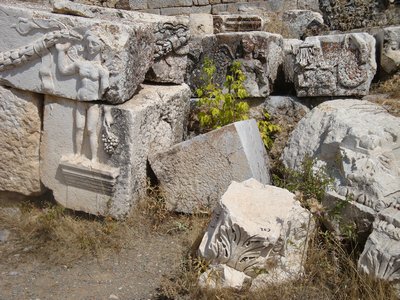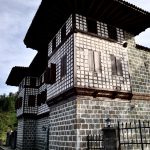Psidian Antioch
For those who know their Bible history, Antioch ad Psidiam near Yalvaç is one of the great must-visit sites of Central Anatolia because of its connection with St Paul, the most famous of all the early Christian missionaries.
Unfortunately the ruins are not much to write home about, nothing to compare with Ephesus, Aphrodisias or Perge for example. What they do have, however, is a peaceful remoteness – coach parties come and go, but in between times you may have them to yourself.
Backstory
St Paul, the saint most closely associated with his birthplace of Tarsus, near Mersin, made four journeys criss-crossing Turkey in the century following the death of Jesus. All but one of them took him through Antioch ad Psidiam, a city founded by the Hellenistic ruler Seleucus Nikator I or his son Antiochus in the chaotic aftermath of the death of Alexander the Great. It was dubbed “ad Psidiam (next to Psidia)” to distinguish it from the city of Antioch on the Orontes (modern Antakya).
In time the city became first a part of the Roman province of Galatia, and then a directly ruled district called Colonia Caesarea Antiocheia. The place where the Bible describes St Paul preaching is believed to have been the synagogue that once stood on the site of the Great Church whose apse, built of great slabs of grey stone, still stands to a considerable height. Just as in Ephesus, his words provoked an angry reaction and on his first visit he and his companion, St Barnabas, were driven out of town.
Around the site
You’ll need a vivid imagination to inject life into the stones that litter this sprawling site. Near the entrance you’ll see unmistakable remnants of the wall that once protected the city, but to conjure up the nearby triple-arched gateway that led into it you’ll have to rely on the information board helpfully provided.
Once through it, though, you’ll be able to walk for much of the rest of the way on the huge grey flagstones that lined the Decumanus Maximus, the main road through town. When it veers to the right and starts its long ascent of the hillside you’ll even be able to see the ridges worn in the stone by centuries of passing cartwheels, a thoroughly romantic link straight back to the distant past.
Perhaps the most evocative ruin on the site is the small podium that survives from the Temple of Augustus, the deified Roman emperor. It was approached via a flight of 12 steps from Tiberius Square. Displayed on the Propylon, the monumental gateway leading up to it, there was a formal record of his achievements known as the Res Gestae Divi Augusti (The Deeds of the Divine Austus), another copy of which adorns the walls of the Temple of Augustus in Ankara.
Behind the temple stands a curved curtain of rock. Archaeologists think that this was once ringed with a two-storied, porticoed building, the ground floor serving as a place in which people could walk and talk as they did in the Stoa of Athens. There may originally have been a temple to the god Men here too.
Antioch’s theatre could once seat some 15,000 people although today it looks much the worse for wear. Conceivably it was here that Paul’s own disciple St Thecla was thrown to the wild animals for refusing the advances of a local nobleman, only to emerge miraculously unscathed.
It’s worth strolling all the way across the site to the nymphaeum (monumental fountain). The remains may be slight but from here you can look across the valley at a lengthy stretch of the aqueduct that would once have brought water from the Sultan Mountains to the fountain. Afterwards there’s a 1.5km path running alongside the outer fence of the site, then left up the hill to examine the aqueduct in more detail.
The path winds round from the nymphaeum to the most substantial structure on the site which may or may not have been a bathhouse. Conceivably it is just the substructure of an unknown building.
Further round again and you’ll come to the site of the huge church where St Paul is believed to have preached although aside from the apse only foundations survive. There’s a not a great deal more, in fact, than survives of the Merkez Kilise, the Central Church, whose foundations can be seen across from the remains of Tiberius Square.
Antioch ad Psidiam barely recovered from the Arab raids of the eight century. In the 12th century the nearby town of Yalvaç was founded and the site was completely abandoned.
Many of the finds from Antioch ad Psidiam are housed in the small museum at Yalvaç (closed Mondays).
Tip: There’s little shade at the site – bring plenty of water with you from Yalvaç.
Transport info
The ruins are within easy walking distance of the town of Yalvaç.


